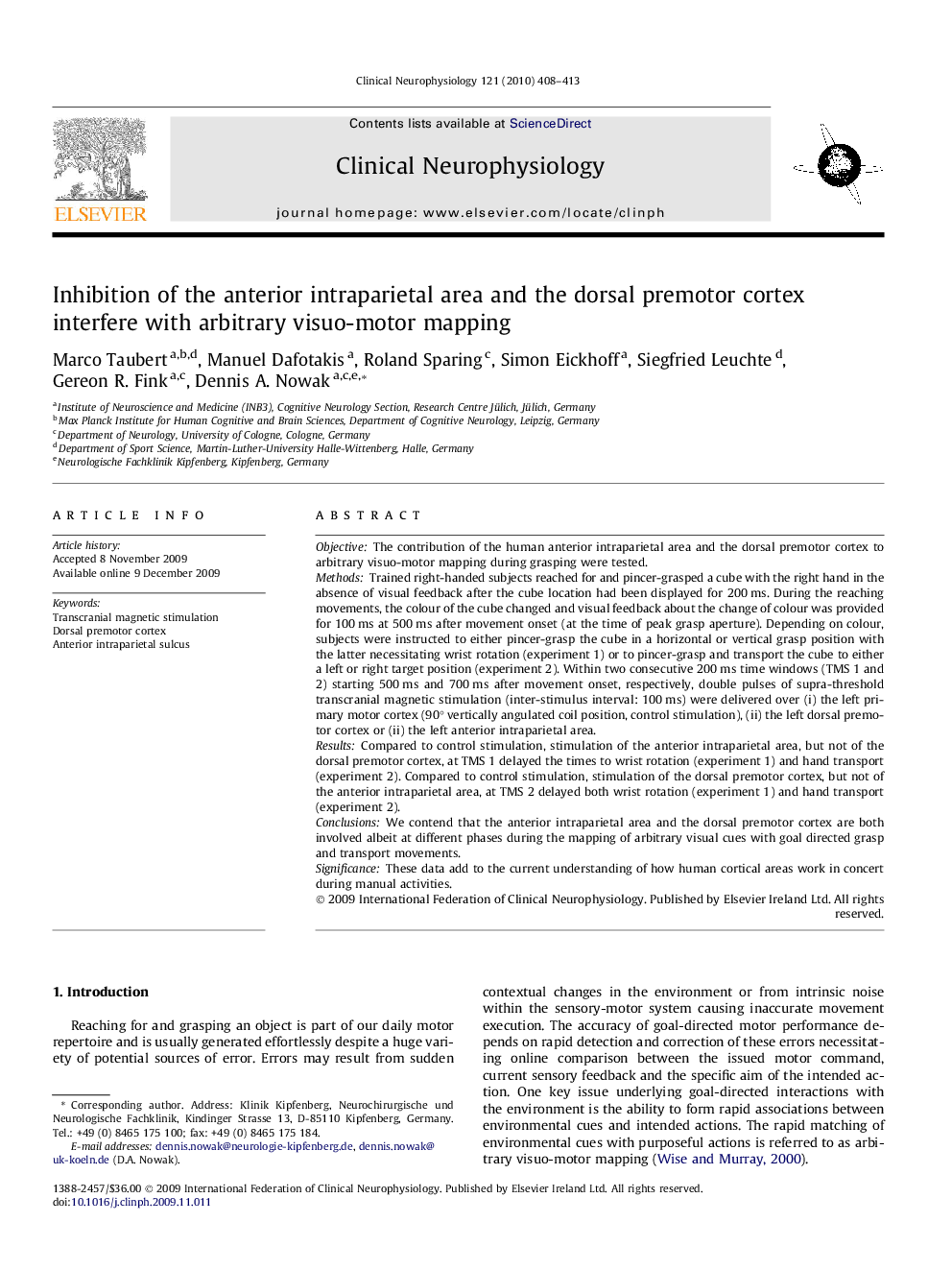| Article ID | Journal | Published Year | Pages | File Type |
|---|---|---|---|---|
| 3045158 | Clinical Neurophysiology | 2010 | 6 Pages |
ObjectiveThe contribution of the human anterior intraparietal area and the dorsal premotor cortex to arbitrary visuo-motor mapping during grasping were tested.MethodsTrained right-handed subjects reached for and pincer-grasped a cube with the right hand in the absence of visual feedback after the cube location had been displayed for 200 ms. During the reaching movements, the colour of the cube changed and visual feedback about the change of colour was provided for 100 ms at 500 ms after movement onset (at the time of peak grasp aperture). Depending on colour, subjects were instructed to either pincer-grasp the cube in a horizontal or vertical grasp position with the latter necessitating wrist rotation (experiment 1) or to pincer-grasp and transport the cube to either a left or right target position (experiment 2). Within two consecutive 200 ms time windows (TMS 1 and 2) starting 500 ms and 700 ms after movement onset, respectively, double pulses of supra-threshold transcranial magnetic stimulation (inter-stimulus interval: 100 ms) were delivered over (i) the left primary motor cortex (90° vertically angulated coil position, control stimulation), (ii) the left dorsal premotor cortex or (ii) the left anterior intraparietal area.ResultsCompared to control stimulation, stimulation of the anterior intraparietal area, but not of the dorsal premotor cortex, at TMS 1 delayed the times to wrist rotation (experiment 1) and hand transport (experiment 2). Compared to control stimulation, stimulation of the dorsal premotor cortex, but not of the anterior intraparietal area, at TMS 2 delayed both wrist rotation (experiment 1) and hand transport (experiment 2).ConclusionsWe contend that the anterior intraparietal area and the dorsal premotor cortex are both involved albeit at different phases during the mapping of arbitrary visual cues with goal directed grasp and transport movements.SignificanceThese data add to the current understanding of how human cortical areas work in concert during manual activities.
